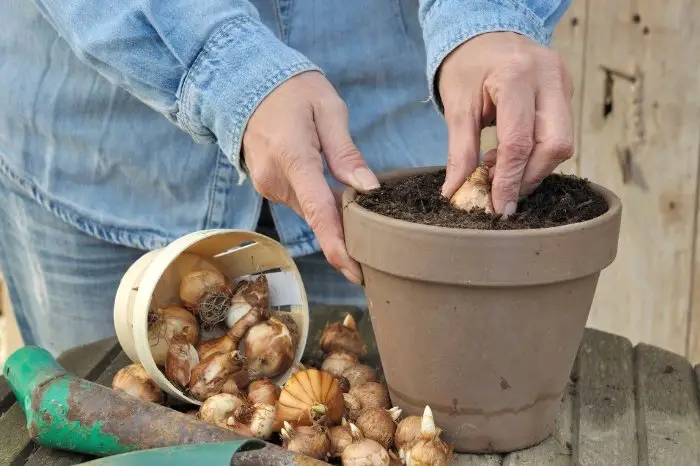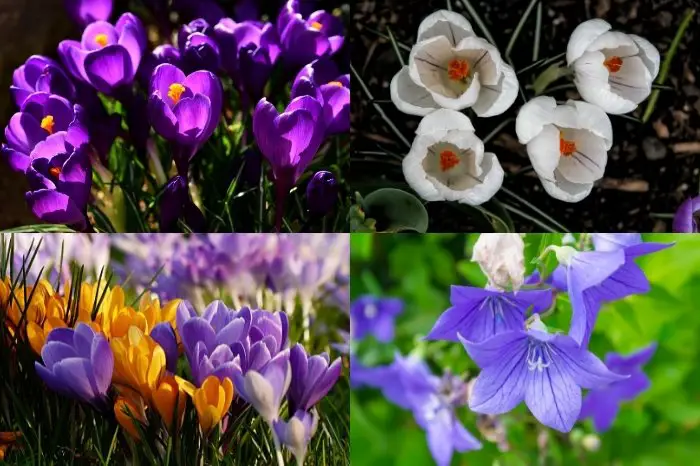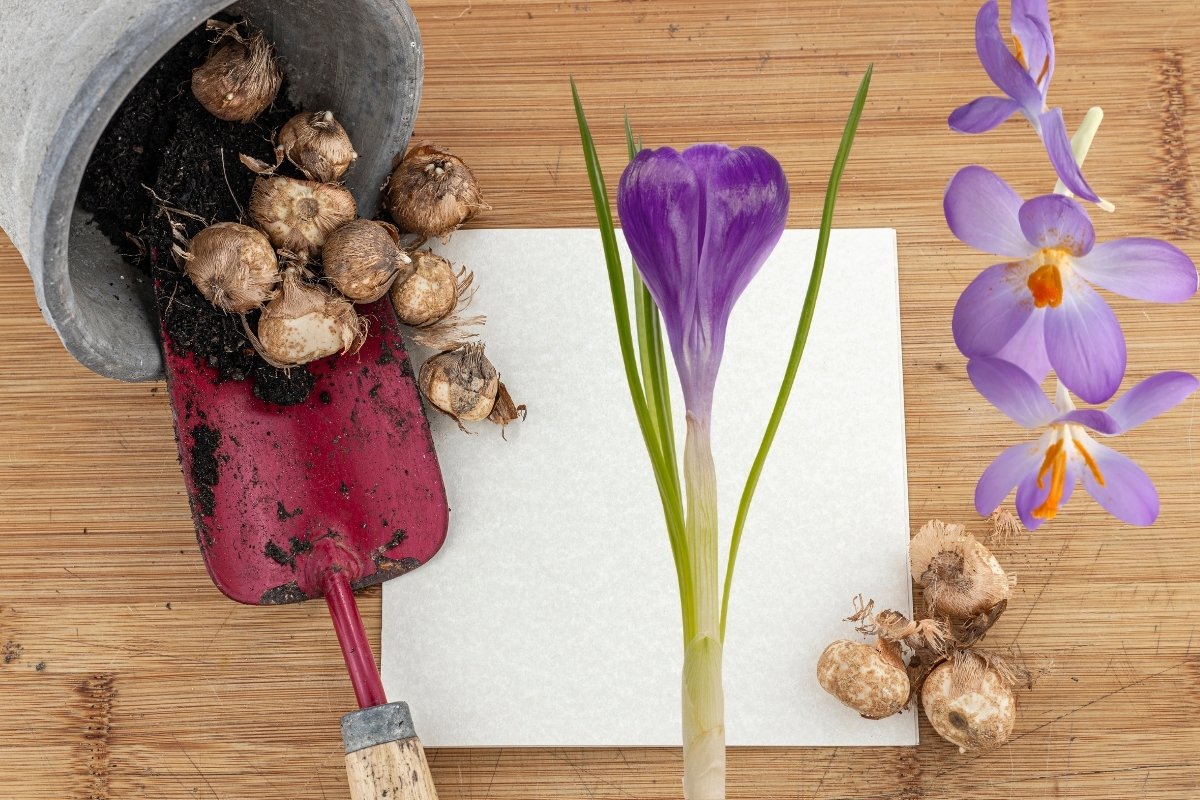Last Updated on January 17, 2023 by Urska
Gardeners must find out when to plant crocus bulbs, also known as comes, in order to get a bounty harvest of flowers at the right time.
There’s nothing more satisfying than waking up one winter morning to a field of gorgeous crocus blooms in your garden. The secret is to learn the right time to plant crocus bulbs.
Different varieties are planted at different times; for example, saffron (Crocus sativus), Dutch (crocus vernus), and snow (crocus chrysanthus) are all planted at different times. Two of these varieties are vernal, and one is autumnal. The planting time varies according to the USDA hardiness zone.
When To Plant Crocus Bulbs
Are you wondering when is the best time to plant crocus bulbs in your region?
If you live in zone 6 to 10, you can plant the saffron variety in August for colder regions or in September for the warmer regions.
You will need to plant the bulbs at least 6 weeks before the first frost. Saffron crocus bulbs are more heat resistant than the vernal varieties and do not require a chilling period. This means you do not need to worry much about the soil temperature before planting.

The saffron crocus plants bloom in just 2 months, providing you with a burst of color before the cold winter season.
If you live in zones 5 and below, plant your saffron variety outdoors at the beginning of August. You can bring your plants indoors before the first frost and watch the blooms brighten up your living area within a few weeks.
When you move your plant indoors, ensure that you provide plenty of sunlight or grow lights during the day.
Varieties like snow and Dutch are hardy in the USDA hardiness zones 3 to 8, and they bloom in the spring. Of course, the lowest extreme temperature in zone 3 is different than in zone 8, so planting times need to be adjusted accordingly.
Click Here to Learn more about Beautiful Flowers:
So What Month Do You Plant Crocus Bulbs?
Gardeners in zones 3 to 6 need to plant their crocus bulbs in September and October. Those in other warm climates can plant from late October to early November.
In any of the regions, the exact month of planting depends on one thing – the average date of the first hard frost in your area. This is when outside temperatures fall below 20 degrees Fahrenheit for several hours consistently. When you plant your bulbs, the soil must be 60 degrees Fahrenheit or lower. Count back 6 to 8 weeks before your average first frost date, and you will know when to plant your corms.
40 Jumbo Crocus Mixture Bulbs- Fall Planting!
How Late Can I Plant Crocus Bulbs?
Autumn is the prime time for planting these bulbs, but you can get them in the soil until late November or even the first weeks of December before the first hard frost arrives.
If you miss this date, you will probably need to wait until the following year’s autumn to plant crocus bulbs.
Check Out How To Prepare Peonies For The Winter
Planting
When planting crocus bulbs, it is crucial to choose a site where there is a rich, well-draining soil. Soggy compacted soil will cause your bulbs to rot before germination.
Before planting, add some organic matter like peat compost or shredded leaves to a depth of at least 10 inches deep.
Plant your crocus bulbs at least 3 to 4 inches deep with the pointy end up for easier germination. Ensure that you water them well after planting to help establish the corms.
Plant the crocus bulbs in clusters or groups rather than in a single line. Single flowers get lost in the landscape without creating the effect gardeners like.
You can plant your crocus bulbs in lawns or meadows where they can form carpets or plant them in front of flower beds along the edge.
Should I soak crocus bulbs before planting? It is advisable to soak your bulbs for at least 12 hours in warm water before planting. This makes it easy for them to germinate.
Can I Plant Crocus Bulbs On My Lawn?
You can plant crocus bulbs in your lawn as a natural way of adding them to your yard. Lift the grass and scatter the crocuses onto the soil, replacing them with the turf. It is advisable to cut the grass on your lawn before planting in September, October, or November. You will achieve a beautiful lawn with flowering crocus with the grass cut short.
When planting crocus bulbs in your lawn, make 20 to 30 holes using a bulb planter as you aim for a natural spread. Ensure that your holes are at least 8 to 10 cm deep and the bulbs are about 10 centimeters apart.
If you have heavy soil, use a fresh bag of multi-purpose compost mixed with 50% grit. Place an individual crocus corm on the mixture and add another 1.5 cm of compost. Once you’re happy with the pattern, add at least half an inch of spent compost in the bottom of the hole. Use soil to cover it up and replace the turf.
If you plant crocus bulbs on your lawn, wait until they have flowered and the foliage has died down in time to cut the grass.
Read more about Should I Deadhead Peonies?
Recommended Varieties Of Crocus Bulbs You Can Grow
- Flower Record. This variety has single pale violet flowers that bloom in spring to early summer. It grows up to 45 inches tall.
- Bowls White. This variety produces white flowers with deep golden yellow throws in early spring. It grows 2 to 3 inches tall.
- Tricolor Crocus. This variety is a beauty, with each flower carrying 3 distinct bands of lilac, golden yellow, and white. It grows up to 3 inches tall and blooms in early spring and late winter.
- Purpureus Grandiflorus. This variety has an abundance of violet flowers with a purple base. They grow up to 4 to 5 inches tall, blooming in the spring to early summer.

Conclusion
Crocus bulbs are also known as corms and have eyes or buds on one side where they germinate from. Now that we know when to plant, it is advisable to face the buds upwards. During growth, the plant consumes the corm, creating new corms for the next season.
Get your crocus bulbs ready for the next planting season and enjoy the winter flowers.
Caroline is a gardener who loves to get down to the nitty–gritty of gardening. She proudly proclaims herself as a ‘dirt worshipper‘ and can often be found deep in the garden, covered in soil and singing to her plants. As a self–proclaimed ‘plant whisperer‘, Caroline believes that plants need love and attention just like any other living thing, and she loves to give them both. When she‘s not tending to her garden, you can often find her researching the latest gardening trends, or teaching others how to make their gardens thrive



